So many times I’ve been asked this question “my ball python is acting like this and like this… what do you think these mean?” I would often smile at the display of panic and anxiety from these breeders. If this has been your case, then Ball Python Body Language: A Detailed Guide With Pictures is a must-read for you.
Looking at the world of ball pythons, they have no other way to communicate with us than the behaviors they put up when they’re happy, stressed, scared, insecure, or sick. Understanding these behaviors and what they mean will help you be a good keeper.
That said, this article promises to take you through all the common and uncommon behaviors and ball python body languages in captivity.
Let’s continue reading
So you can stop asking around for what others think is wrong with your snake.
Let’s explore all the answers you need here.
This article has been reviewed by Dr. Gospel. Read more about our knowledge control process here.
Contents
- Why Do You Need To Understand Ball Pythons Body Language?
- 12 Ball Python Body Language And Their Meaning
- The All Happy Snake (Positive Or Normal Behaviors)
- Relaxed Muscles
- Sleeping
- Periscoping
- Defensive Behaviors (Hey, I’m Scared Just Leave Me Alone)
- He Is Scared
- Seasonal Body Languages Or Behaviors (Just Leave Me Alone I’m Going Through a Hard Time)
- Loss Of Appetite During Breeding Season
- Ailment Body Languages (Abnormal Behaviors. Indicating Your Python Needs Help)
- Breathing Difficulty
- Morph Related Behavior (I Was Born This Way, I Can’t Help it)
- Your Snake Is Hungry (I’m Hungry, Please Get Me Some Food)
- Conclusion
Why Do You Need To Understand Ball Pythons Body Language?
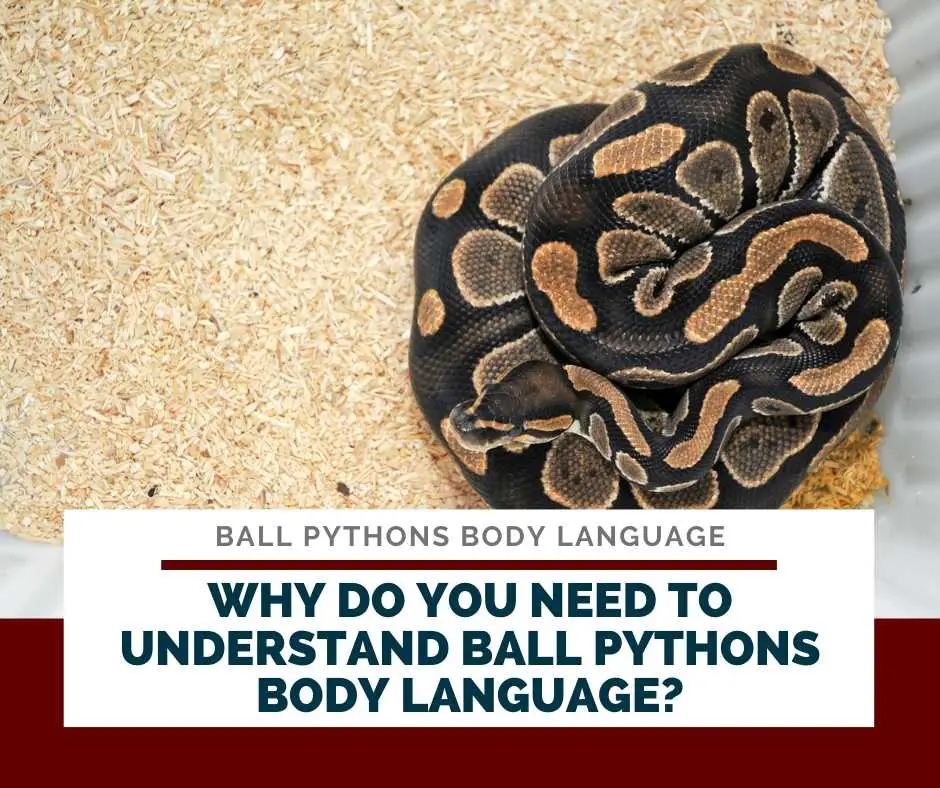
The reason you need to understand ball pythons’ body language isn’t far-fetched. These behaviors play significant roles in letting you know what is going on with your snake. With this, you can provide your snake with optimum care.
Understanding these behaviors can make a huge difference between having a stressed python or being a good keeper.
Ball pythons unlike dogs or monkeys can’t express their feelings in any other way other than to put up some behaviors. These behaviors range from telling you “hey! I’m happy with your care” to “mess with me now and I’m going to bite you”.
It is also their only way of telling you when something is wrong with them. Thus, understanding these behaviors and what they mean is very important.
Note: Behaviors tend to vary across individual snakes, hence your snakes may display some behaviors different from what’ll be mentioned in this article.
The basic principle is, they would often exhibit any of these behaviors. Therefore you have to follow me through the article to the end to find out.
12 Ball Python Body Language And Their Meaning
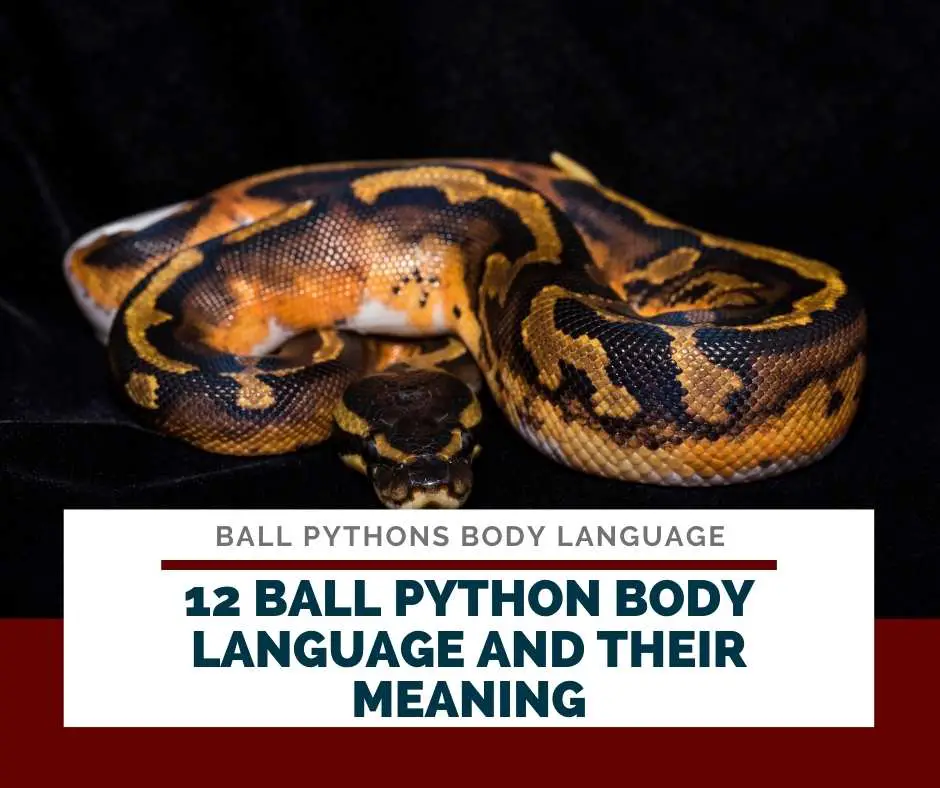
There is a clear demarcation between normal and abnormal behavior in ball pythons. However, in many cases, some of these behaviors are so confusing that you can hardly tell if your snake is alright or not.
As a keeper, your responsibility is to ensure that your snakes have good care. This consciousness helps you to reduce risks to the minimum.
That said, it’s normal for you to panic if you notice a behavior you haven’t seen before in your snake. It is even more worrisome when you can’t explain the behavior because you don’t know what it means.
To help you unravel these behaviors and their meanings, I’ll group these behaviors into categories of similar characteristics.
The All Happy Snake (Positive Or Normal Behaviors)
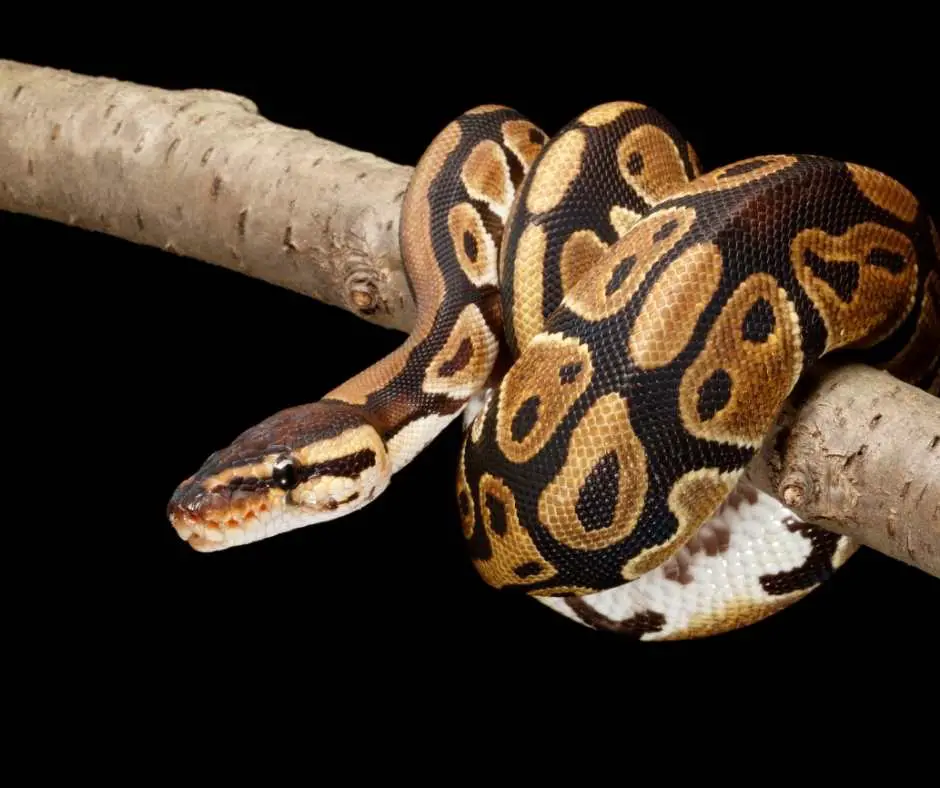
When ball pythons are calm and happy, it means that everything is alright with them. Through these calm and happy behaviors, you can tell that your husbandry is at its best.
When they are happy, they’ll feel so relaxed. You’ll see them resting their head on their body or doing other activities such as climbing branches.
Slow Movement
Another behavior that tells you that your ball pythons are happy is that they’ll move very slowly in the enclosure. They do this to explore around the enclosure. In many cases, they’ll come out of their hides for a moment before going back inside.
Relaxed Muscles
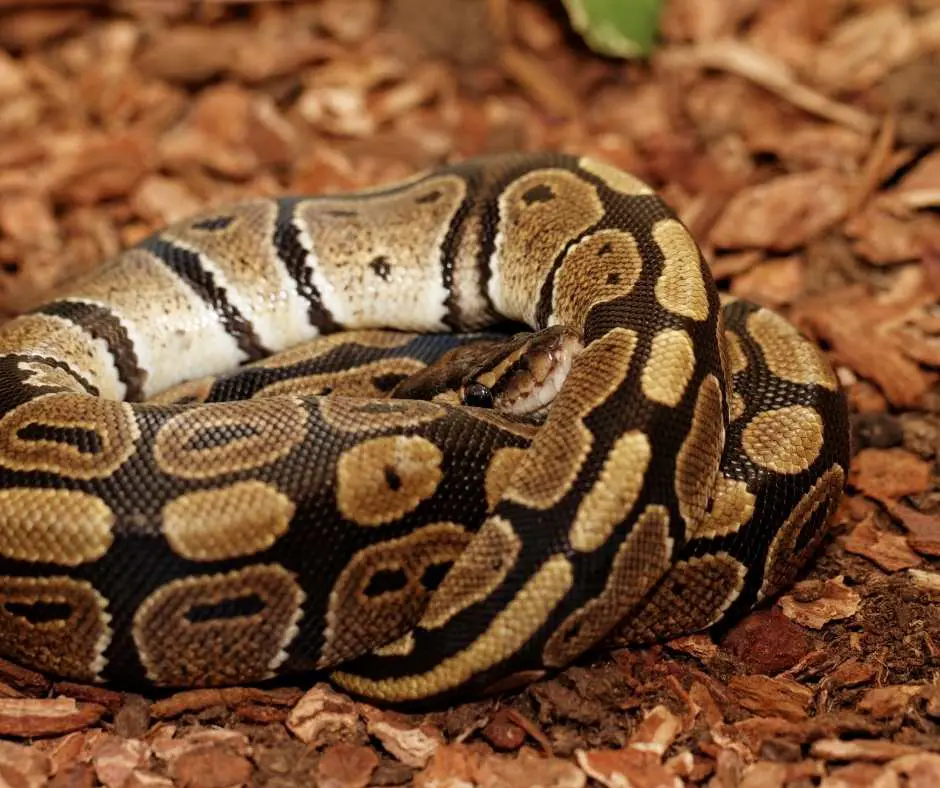
You will notice that their muscles are relaxed. They may also curl up inside their hides.
Sleeping
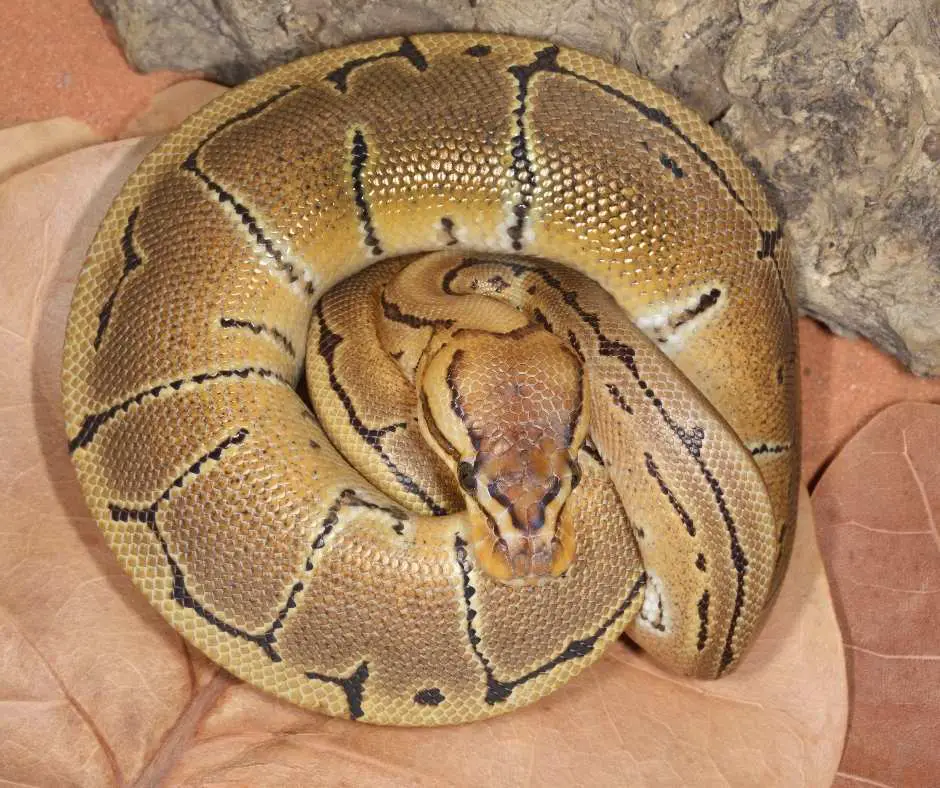
When they’re deep asleep, it’s also a behavior to tell that everything is right with them. However, since they don’t sleep with their eyes closed; it is difficult to tell when they’re sleeping. But, there are a couple of signs to help figure it out if they’re sleeping or not.
When ball pythons are sleeping, they will be completely relaxed and not move at all. They will also cease to flick their tongue when they are sleeping. Another sign to tell that they’re sleeping is that they will breathe slowly and steadily.
If all these behaviors occur in the day time, your snake is most likely sleeping. When you notice that your ball python is sleeping, it’s not a good time to pick it up. If you try picking them up at this time, you’ll scare them or get them startled.
Periscoping
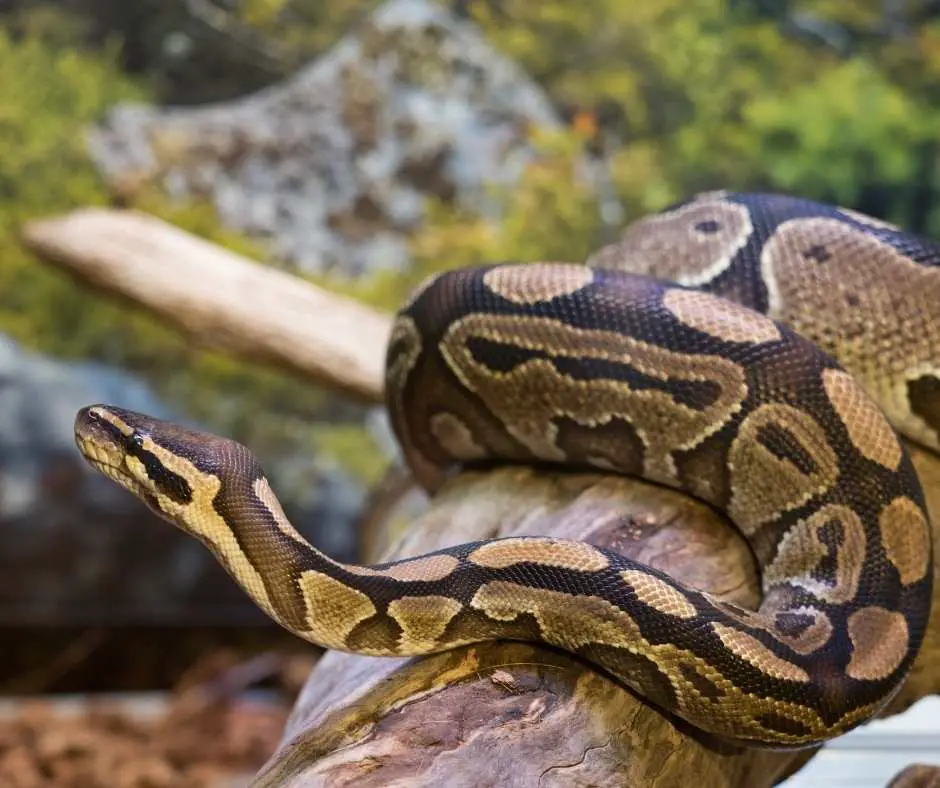
Periscoping has to do with a particular way of positioning the head and neck when exploring. They’ll raise their neck very high and put their head forward in a way that seems as though they want to strike on something.
This is an interesting behavior often exhibited by ball pythons when they are just exploring their surroundings. Most keepers got scared by this behavior because they think the snake is positioning to strike a bite.
In captivity, ball pythons periscope on different occasions such as when you get them out of the cage.
One important thing to note is that, if they exhibit this behavior when you want to handle them or clean their cage, do not get startled. If you show outright fear, that will scare them to become defensive.
Defensive Behaviors (Hey, I’m Scared Just Leave Me Alone)
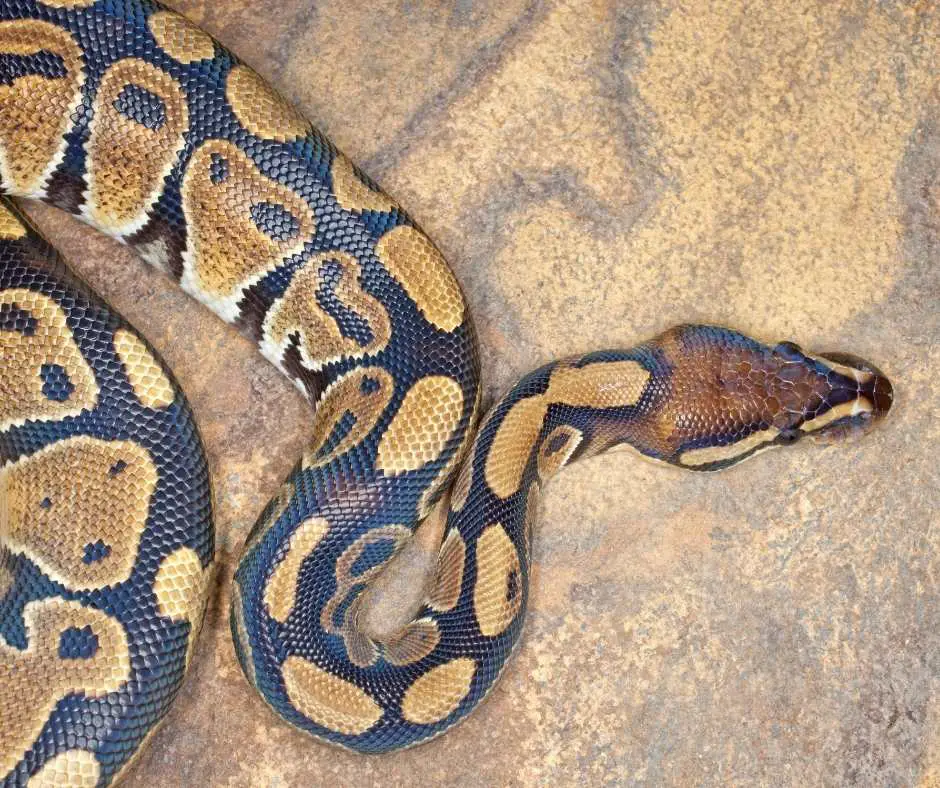
Ball pythons are generally docile and less temperamental. They aren’t known to defend themselves aggressively. However, if they feel frightened or threatened, they might want to strike.
One thing to keep in mind is that even before they defend themselves through a bite, they may have given you some warning signals. One common behavior before they bite is that it’ll look as though the snake is locked on to you.
Their muscles at this point will become tense. They’ll curl their necks as though to form the letter ‘S’. Once their necks are curled this way, they’ll likely strike a bite. Before this, the snake will also flick its tongue longer and faster than usual.
You’ll also notice a jerky movement of the head. Thus, if you didn’t notice the warnings soon enough to retreat, you’ll have your fingers bitten.
If it is prey that they are about to strike, they’ll put up all the aforementioned behaviors to gather information about the prey. Information such as if the prey is sizable for them to swallow. If it is you that they’re about to bite, they may just bite and let go.
Hardly will a ball python bite and hold on to its keeper as it would do to a prey. Even with these behaviors, they would be calm once you get them out of the cage. Hence, if getting them out to clean the cage was your intention, just go ahead with it.
Another defensive behavior exhibited by ball pythons is curling up into a ball with their head stuck at the center. This is a more common behavior among ball pythons. Curling up their bodies into a ball is the first thing they do when they feel insecure. That is why they are given the name “ball pythons”
He Is Scared
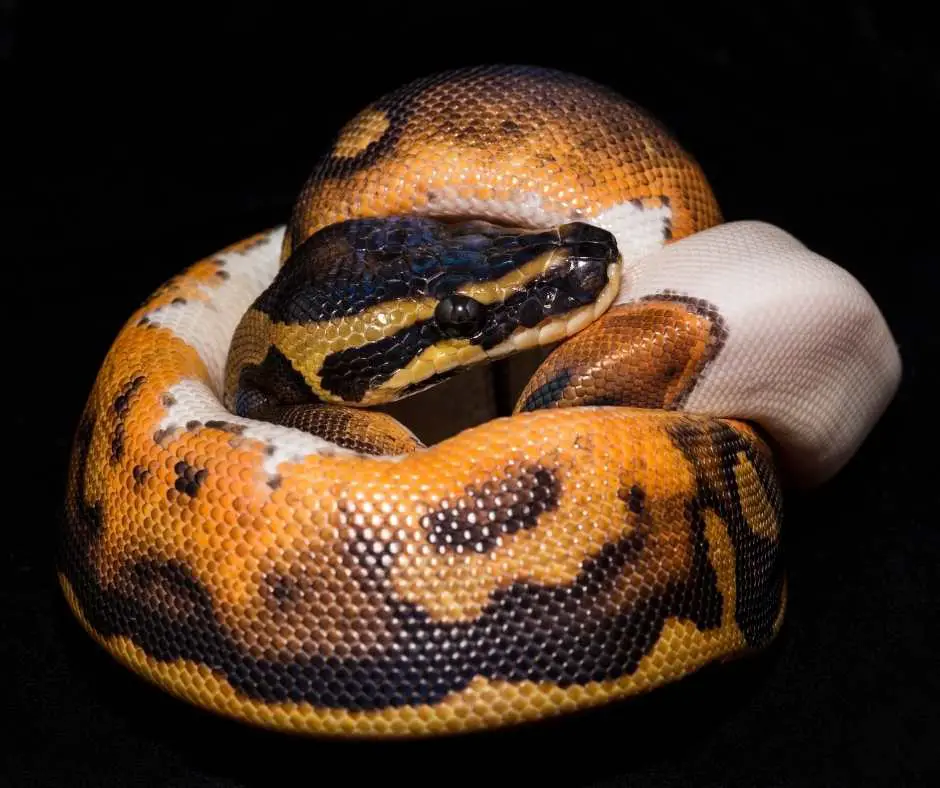
A scared ball python will not want to be touched. Ball pythons generally don’t like to be touched on their heads. If you touch their heads either intentionally or by mistake, they will pull themselves (their heads) back.
This is enough to tell you that he doesn’t like to be touched on the head. If you still go ahead and touch, then you’ll have yourself to blame when he strikes you.
If your ball python is hissing at you, it is not a good time to pick it up. This may mean that he is not happy.
A frightened ball python will roll up, flee or coil up into an “S” shape.
Seasonal Body Languages Or Behaviors (Just Leave Me Alone I’m Going Through a Hard Time)
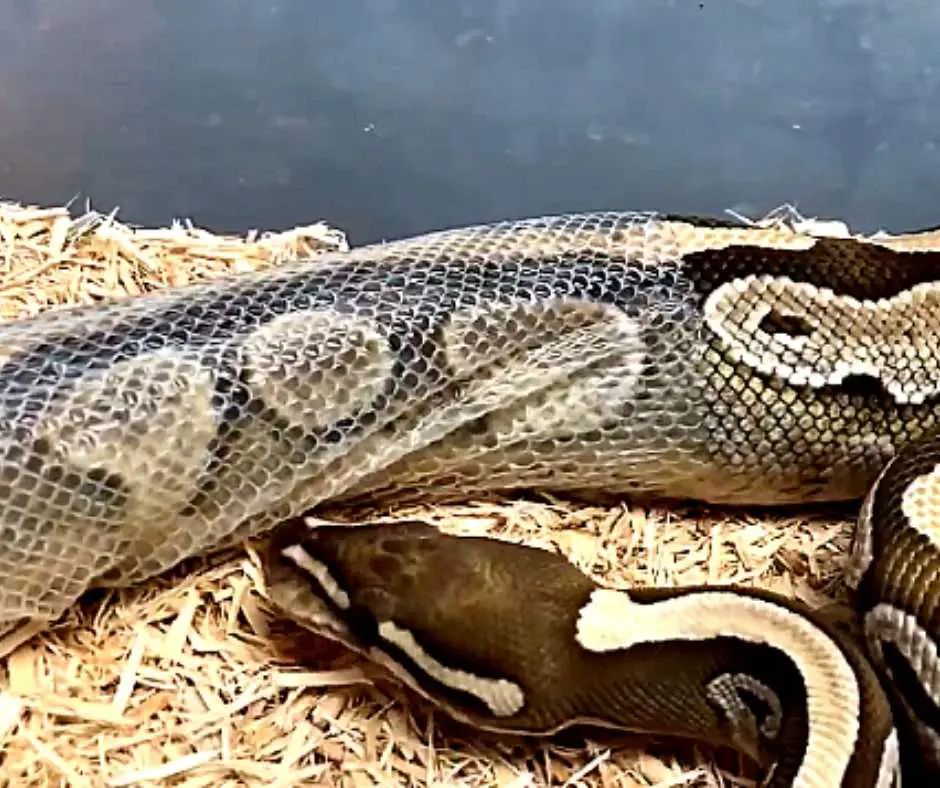
(Image Source: Megaconda YouTube)
There are certain behaviors or body language that your ball pythons will exhibit to tell you that something is going on. This doesn’t necessarily mean that something is wrong with them.
Those body languages happen once in a while and they’re cues to tell you that it’s a particular time of the month or year. These behaviors are nothing to panic about but at the same time, you must pay close attention to your snakes.
Paying close attention is important so that any of the behaviors wouldn’t go out of hand. One of these behaviors is when they are about to shed. During this period their bellies will change color to pink.
Another thing is that their patterns will look pale or dull. For ball pythons with lighter colors (patterns), it’ll be hard to tell the change in color of their patterns. As I said, this body language doesn’t suggest that something is wrong with their health.
It rather tells you that their bodies are going through some natural change. When ball pythons are shedding, their eyes will be cloudy. In some cases, their eyes will turn blue.
They will also hide often especially in a hide with high humidity.
Loss Of Appetite During Breeding Season
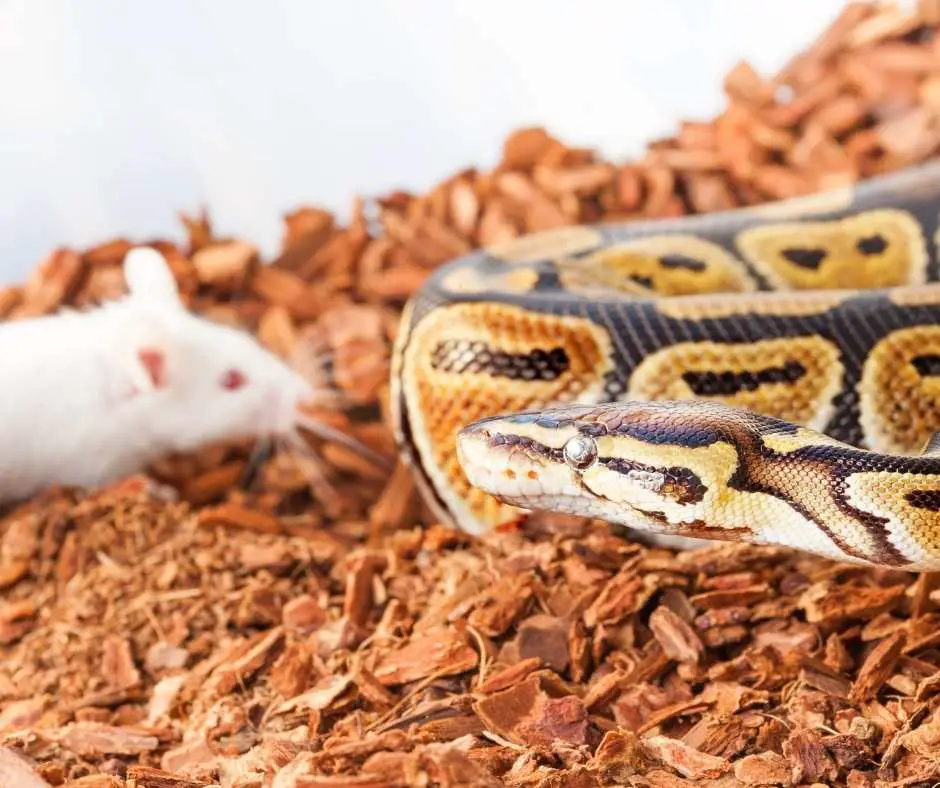
My ball python is not eating, what is the problem? This was a problem common to wild-caught ball pythons. Now, captive ball pythons don’t have too many issues when it comes to feeding.
However, during the breeding season (sometime around September to March), both male and female ball pythons will have less interest in food. This is because they are only focusing on breeding. For a comprehensive list of male and female ball python behaviors during breeding, check our article on the subject.
However, this is not the only reason that ball pythons in captivity will refuse to eat. Read on to find out the major reason.
Ailment Body Languages (Abnormal Behaviors. Indicating Your Python Needs Help)
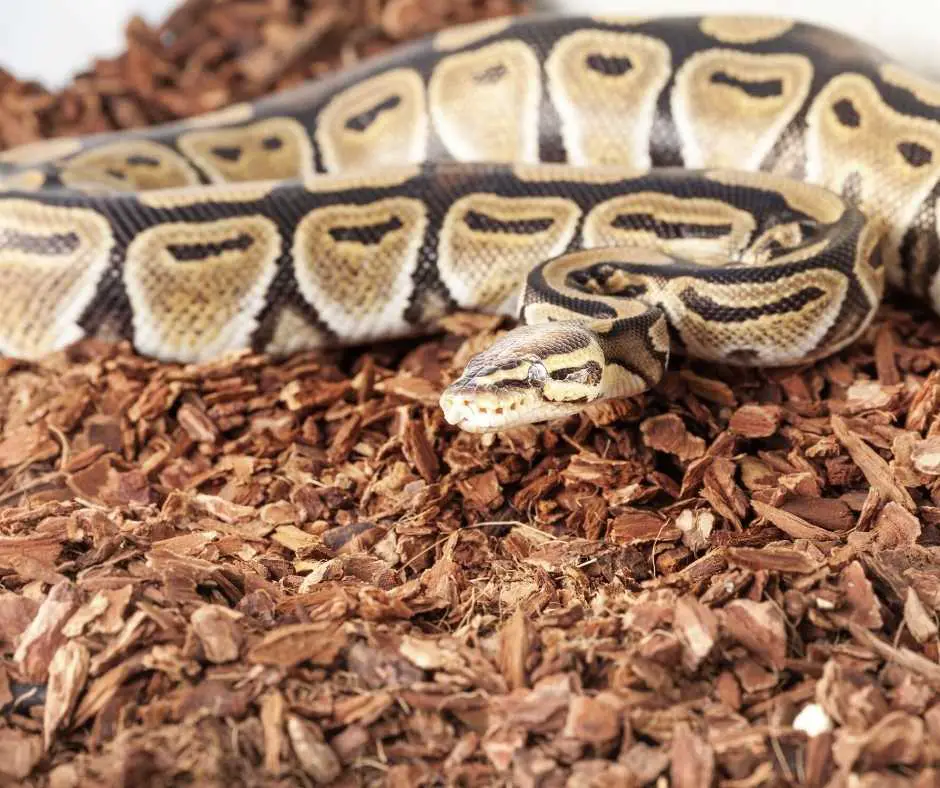
Body language is the only way ball pythons can communicate to you that they’re sick. Since they can’t tell you, you always have to be on the lookout for these cues. These languages or behaviors are so prominent that you can easily figure out that something is wrong.
One of these behaviors is if they’re not eating. As mentioned earlier, there are many reasons your ball python will refuse to eat for months. Some of these reasons are normal while some like health issues are not.
Before you conclude that your ball pythons’ not eating is health-related, you have to check for their weight over time. If they are in good shape, then there is nothing to worry about. It might be some other factors like poor husbandry or breeding season.
But if there’s a significant weight loss over time, it’s likely that your ball python is sick and needs urgent attention.
Breathing Difficulty
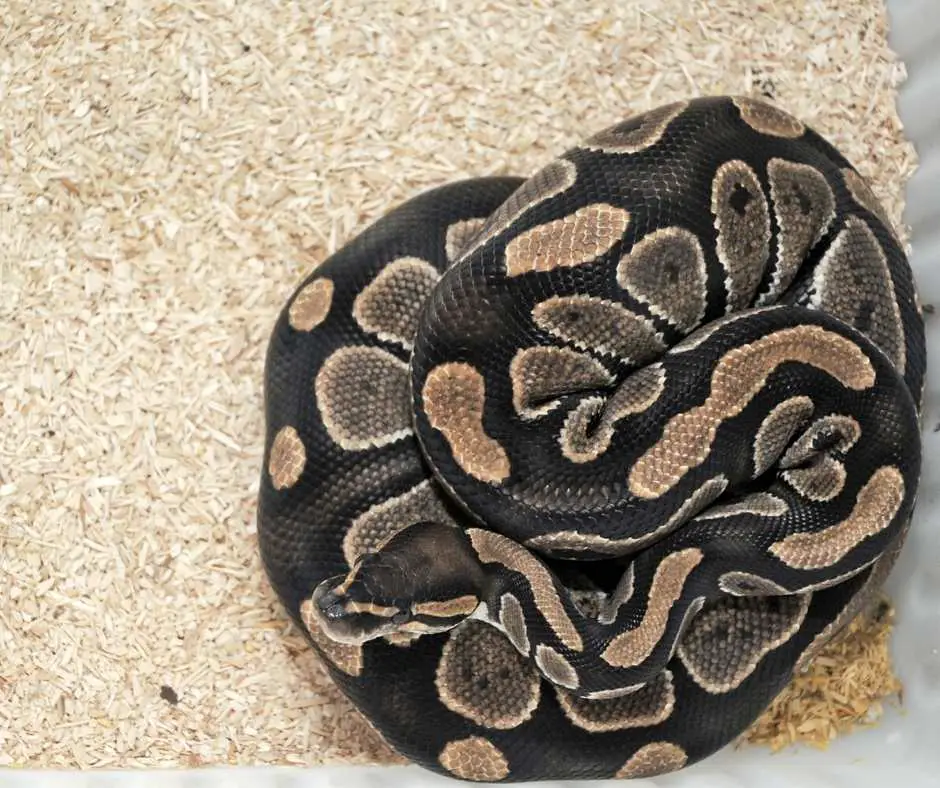
Another body language that will tell you that your ball python is sick is heavy breathing. You’ll know your ball python is sick if you notice him sitting helplessly in his enclosure and is gasping for air (breathing with mouth open) or breathing rapidly.
This may mean that the snake is infected with a respiratory infection. Aside from gasping for air, this behavior will be accompanied by some mucus discharge from the nose and mouth.
Other signs includes:
1. Staying near heat sources.
2. Unusual breathing sounds.
3. Food refusal
Morph Related Behavior (I Was Born This Way, I Can’t Help it)
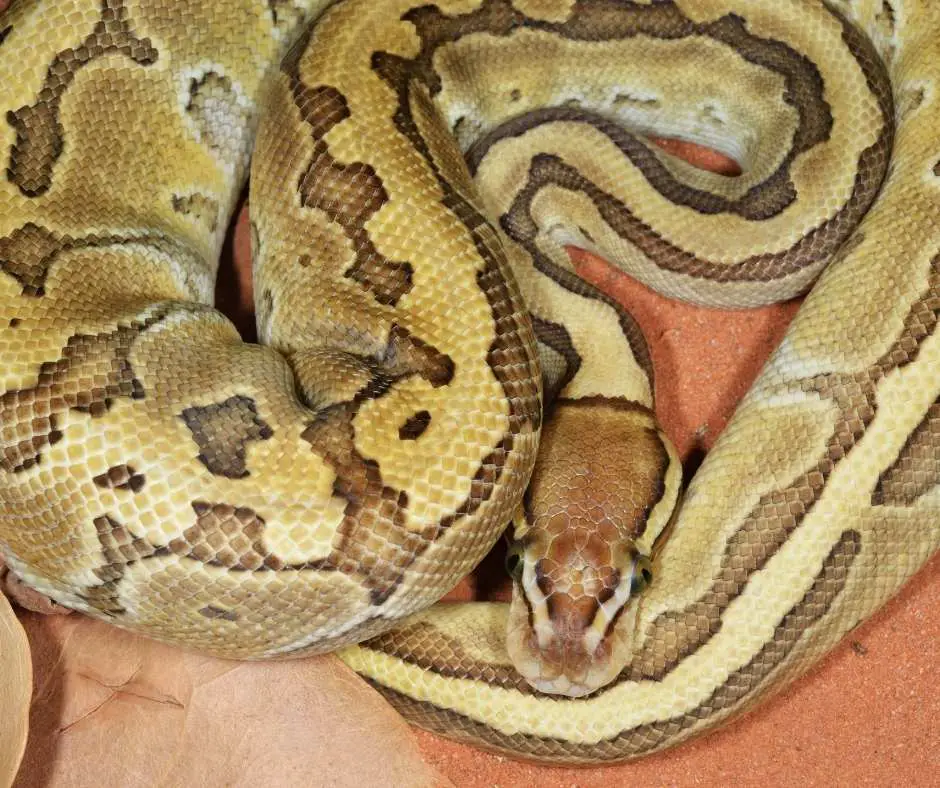
Some behaviors in ball pythons are morph-related. What this means is that certain ball python morphs are known to have an ailment. This ailment occurs as a result of wrong cross-breeding or wrong gene mutation.
Thus, you should be aware of your snake if it’s one of such morphs. An example of a morph-related ailment is “wobbles”. Spider ball python morph is known to have wobbles. This means that their eyes or heads aren’t steady (focused) or aren’t coordinated. Because of this, they often miss their target when striking.
Your Snake Is Hungry (I’m Hungry, Please Get Me Some Food)
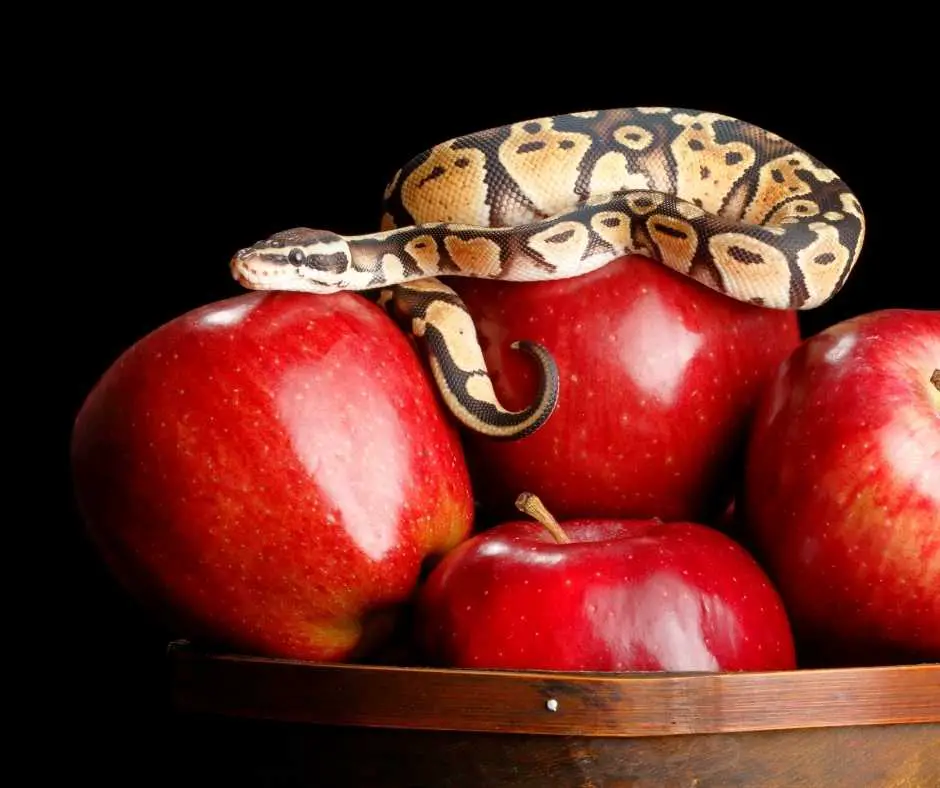
Sometimes your snake can climb its way to the top of the enclosure to stare for a moment. This behavior is often noticed when they are hungry. Hungry Ball pythons lay motionless, with their heads ready to strike, prowl around slowly in search of preys.
Another thing that could cause this behavior is if the tank is too hot for the snake.
How do you figure this out? First, check for the temperature of the tank. Especially the temperature of the warm side. If all temperatures are at normal levels, try offering your snake some food.
If this doesn’t work, then chances are that the snake is trying to get away from some bugs (ticks and mites). In that case, take a closer look at your ball python for ticks or mites. If mites and ticks are detected, take out time to clean his enclosure and get him treated.
Conclusion
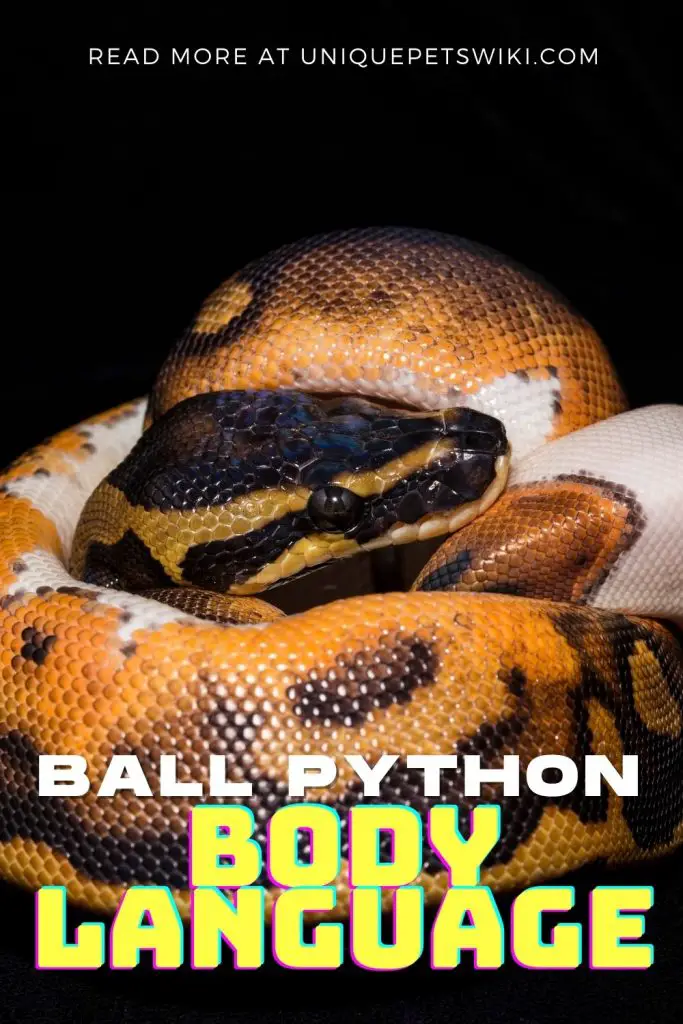
Now you know the different behaviors and body language of ball pythons and what they mean. You will not worry needlessly again when you see your pet snake exhibit any of these behaviors.
Not only will you know what to do at each point, but you’re now in the best position to help others, especially ball python beginners. One important thing you should have in mind is that most of these behaviors are interrelated.
By this, it means that a particular behavior may mean more than one thing for your snake. That is why for such behaviors it is not ideal to interpret them in isolation. You have to consider other things before concluding.
As mentioned earlier, most ball pythons will exhibit behaviors that are out of our list. That would be dependent on the individual snake. The gravity of the behavior displayed should determine your rate of response.
In a nutshell, any behavior that is not normal to all ball pythons is an indication that your snake is sick.
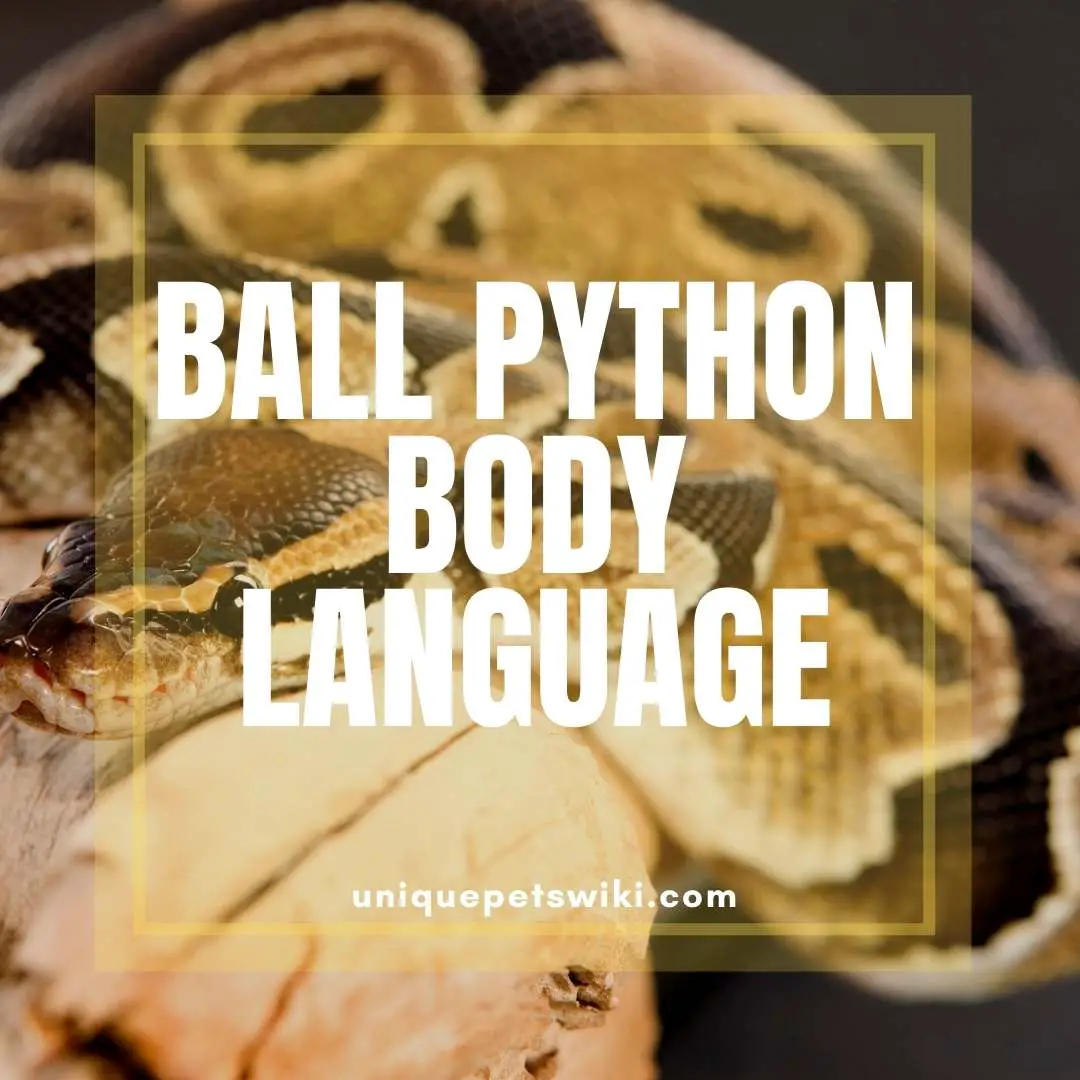
This article was really helpful thank you!
Thank you Jessica!
Thanks for the article, but is it normal for my ball python to shed 3 times a year? He’s 3 years old, and he has only shed 9 times in his life, but he has never shown any problems.